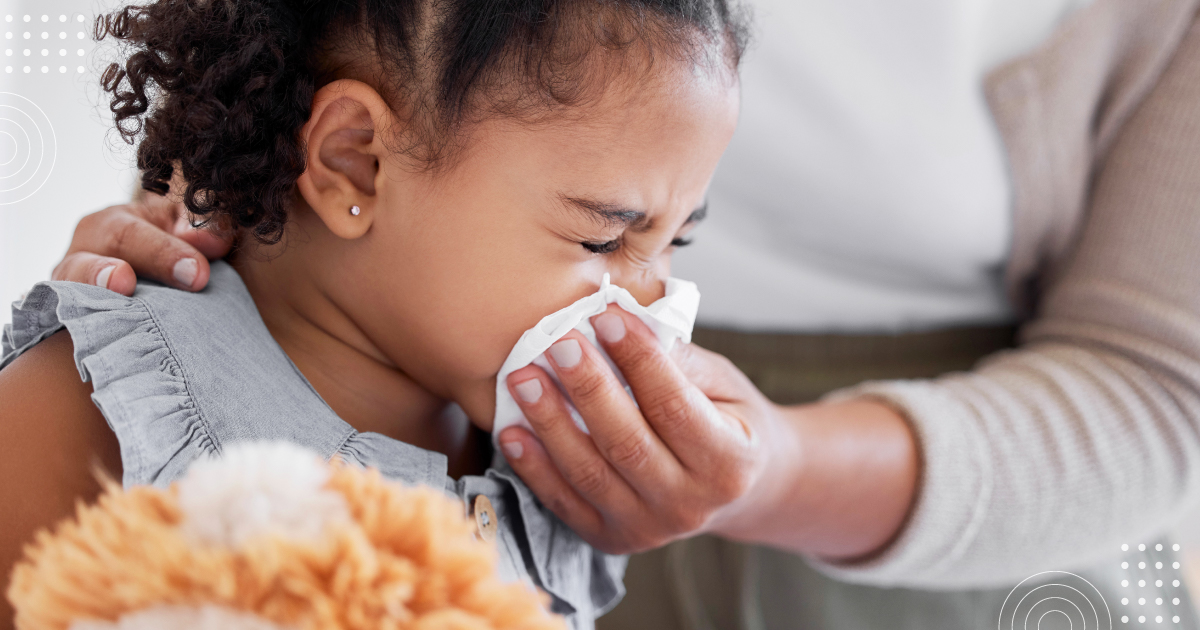Common Fall Illnesses and How to Avoid Them

As summer winds down and school routines kick in, it’s not just backpacks and lunchboxes that return – seasonal sniffles, sore throats, and other common illnesses often make an early appearance, even before fall officially begins. With kids back in close contact, germs spread quickly, and it’s easy for minor bugs to turn into bigger disruptions.
The good news? Knowing what fall illnesses are most common and how to prevent them can help your family stay healthy and avoid those last-minute ER visits. A few simple steps now can mean fewer sick days and a smoother start to the season.
Why Prevention Matters Now
Preparing now helps put your family ahead of the typical spike in respiratory illnesses that will follow this month. According to the CDC, flu season typically covers the fall and winter months, with flu activity peaking between December and February. A steady look at current respiratory virus data shows that illness levels are still low, but flu, COVID-19, and RSV could start climbing soon. Getting vaccinated, practicing good hygiene, and staying alert to symptoms can help your household stay ahead of seasonal illnesses.
What Common Fall Illnesses Look Like
Flu
Flu symptoms often include high fever, body aches, sore throat, cough, fatigue, and congestion. Each year, thousands of children are hospitalized, and dozens may die from flu-related complications. From 2010–2011 through 2022–2023, annual flu-related hospitalizations in kids under 5 ranged from 6,000 to 25,000; among flu-related child deaths, nearly 80 percent occurred in children who were not fully vaccinated.
Colds and Other Respiratory Bugs
Cold symptoms like a runny nose, cough, and sore throat are common. Early preventive steps, especially handwashing, can stop one in five respiratory illnesses.
Germs Like COVID-19, RSV, Norovirus
As colder weather pushes families indoors, illnesses like COVID-19, RSV, and norovirus spread more easily. Symptoms can overlap; RSV may cause wheezing in babies, norovirus hits with vomiting and diarrhea. Preventive habits like handwashing, sanitizing surfaces, covering coughs, and staying home when sick reduce risk.
Simple Steps to Stay Healthy
Get Vaccinated
Vaccines remain the most effective tool for preventing serious illness. The CDC recommends that everyone 6 months and older get a flu shot, ideally by the end of October and as long as viruses are circulating. Getting your updated COVID-19 vaccine and RSV shot when recommended helps complete your protection.
Wash Hands Often
Proper handwashing, especially before meals, after bathroom use, or touching public surfaces, can prevent 20 percent of respiratory infections.
Cover Coughs and Clean Surfaces
Use a tissue or your elbow to cover coughs and sneezes, and toss tissues right away. Clean commonly touched surfaces regularly – this helps reduce the spread of bugs like the flu.
Focus on Healthy Habits
Good sleep, balanced nutrition, staying active, and hydration boost immune resilience. Experts say these habits matter just as much as hygiene.
Reading Early Signals and Acting Fast
Monitor local illness trends as fall approaches – the CDC updates respiratory illness data weekly. Stay alert to symptoms like high fever, trouble breathing, or severe dehydration, especially in young children or older adults. If symptoms escalate or last more than a few days, it’s wise to get medical attention promptly.
Small Habits, Big Impact
Staying healthy this season doesn’t require big changes – just small, consistent habits that make a real difference. With fall illnesses like colds, flu, and other seasonal bugs on the rise, it’s important to take preventive steps. Getting vaccinated, washing hands regularly, keeping shared spaces clean, eating well, and staying updated on local health alerts can go a long way in helping your family stay well. These simple steps add up to fewer sick days, stronger immune systems, and more time doing what you love.
Still, life happens. From unexpected fevers and severe coughs to accidents that just can’t wait, Physicians Premier is ready to help, 24/7. Our freestanding ERs across Texas are here when you need fast, reliable care. Before your next busy week or family outing, take a moment to find your nearest location.
Sources
“Flu Season,” Centers for Disease Control and Prevention,
https://www.cdc.gov/flu/about/season.html
“Respiratory Illnesses Data Channel,” Centers for Disease Control and Prevention,
https://www.cdc.gov/respiratory-viruses/data/index.html
“Flu Symptoms and Treatment,” VeryWell Health,
https://www.verywellhealth.com/flu-7109004
“Flu and Children,” Centers for Disease Control and Prevention,
https://www.cdc.gov/flu/highrisk/children.html
“How Can I Help My Child Stay Healthy During Cold and Flu Season?” Centra Care,
https://www.centracare.com/articles-stories/help-my-child-stay-healthy/
“How to protect yourself from norovirus, COVID-19, flu and RSV during the winter surge,” The Associated Press,
https://apnews.com/article/norovirus-flu-symptoms-covid19-rsv-a673bf84d9503395783d849733e007eb
“It’s a Good Time to Get Your Flu Vaccine,” U.S. Food and Drug Administration,
https://www.fda.gov/consumers/consumer-updates/its-good-time-get-your-flu-vaccine
“ACIP Recommendations Summary,” Centers for Disease Control and Prevention,
https://www.cdc.gov/flu/hcp/acip/index.html
“Preventing Illness Comes Down to 5 Things, Experts Say,” Parents,
https://www.parents.com/5-preventative-measures-for-colds-according-to-experts-8775657
“Respiratory Illnesses Data Channel,” Centers for Disease Control and Prevention,
https://www.cdc.gov/respiratory-viruses/data/index.html


